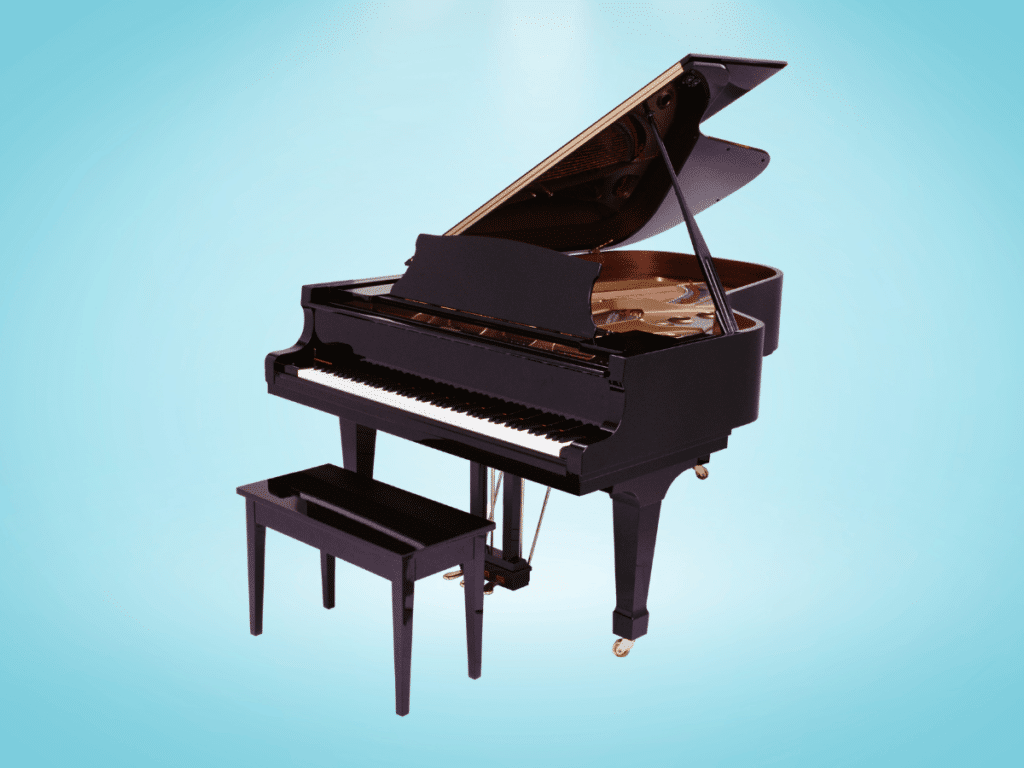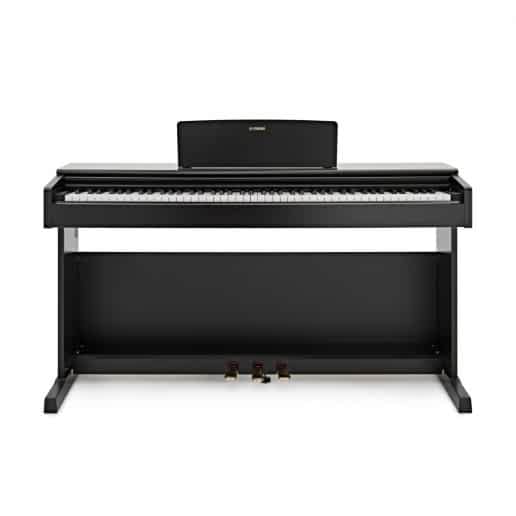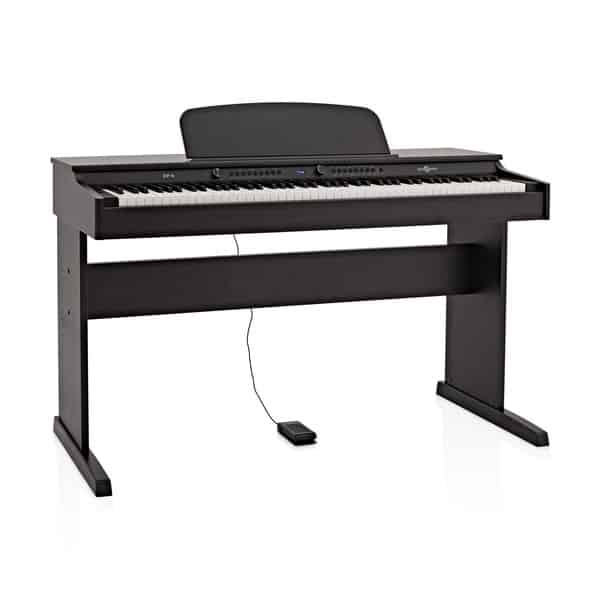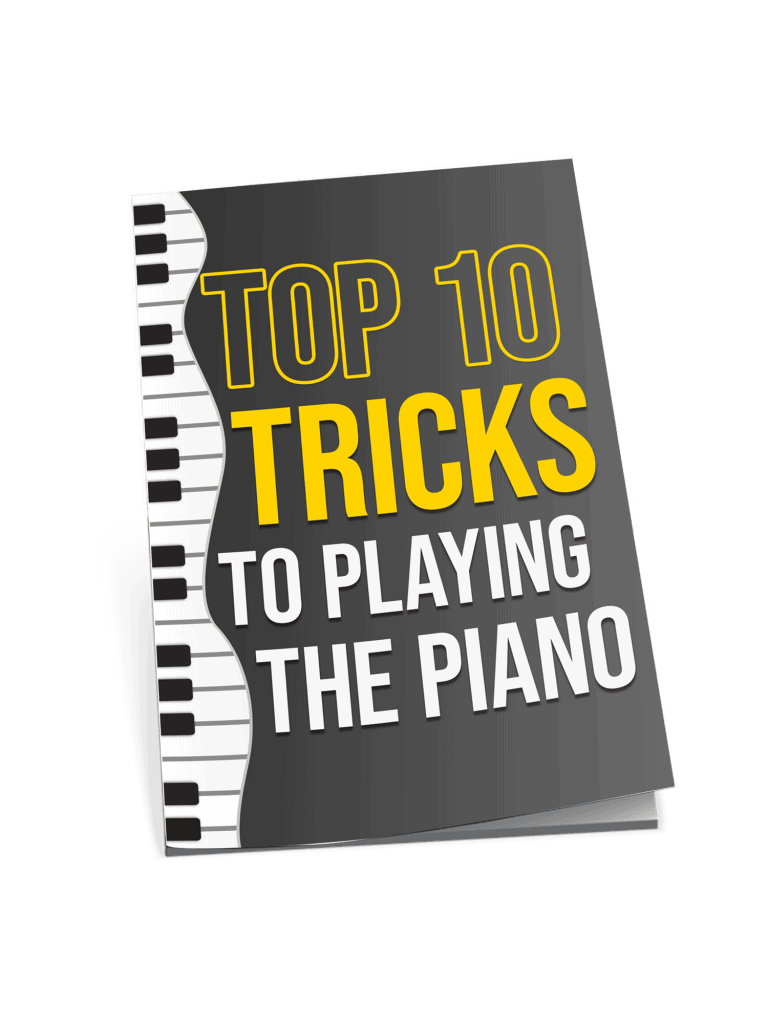Best
Overall Beginner Digital Piano
-
Overall: Compact and portable design, making it suitable for small spaces and easy to transport
-
Best Feature: Graded Hammer Standard (GHS) keyboard for an authentic piano playing experience
-
TedScore™: 10/10
Best
for Budget-Pick for Beginners
-
Overall: Compact and lightweight design,
making it easy to transport and store -
Best Feature: Comes with 88 weighted keys and 64 polyphony features that allow playing multiple keys
-
TedScore™: 7.5/10
Best
Digital Piano for Home
-
Overall: Multiple built-in sounds and effects for versatile performance options
-
Best Feature: Bluetooth connectivity for seamless integration with apps and devices
-
TedScore™: 8/10
Ever been curious about how many strings a piano has?
It’s a question that might not cross your mind unless you’re a musician or a piano enthusiast. But the answer is fascinating nonetheless.
Pianos are complex instruments that require a careful balance of various components to produce their unique sound. And the strings are an essential part of that equation.
So, how many strings does a piano have? Read on to find out!
Understanding Piano Strings

If you’re curious about the inner workings of a piano, you might have wondered about the strings that produce the instrument’s sound.
Piano strings are made of steel and come in different sizes and thicknesses depending on the note they are intended to produce.
The number of strings in a piano varies depending on the model, but a typical full-sized, 88-key piano has around 230 strings.
For the tenor and treble notes, three strings are strung for each key, while for bass notes, the number of strings per note decreases from three to two and then to one as you approach the lowest bass notes.
Piano strings are made of a steel core wire, then wrapped in copper wire. The copper wire can be either bare or wound, depending on the note’s pitch.
Wound strings have a copper wire wrapped around the steel core, while bare wire strings are made of a single strand of copper wire.
The thickness and tension of the strings determine the pitch and volume of the notes they produce. Thicker strings produce lower notes, while thinner strings produce higher notes.
The tension of the strings is adjusted by tuning the piano, which involves tightening or loosening the strings to produce the correct pitch.
Historical Evolution of Piano Strings

Bartolomeo Cristofori invented The first piano in Italy in the early 18th century. His piano had only 54 keys and around 170 strings. These strings were made of brass and iron and were strung vertically.
Over time, piano makers began to experiment with different materials and designs. In the mid-19th century, the American piano maker Steinway introduced a new design that included overstrung bass strings.
These strings were longer and thinner than the previous bass strings and were arranged diagonally across the piano. This design allowed for greater tension and resonance and became the standard for modern pianos.
Today, a standard modern piano has 88 keys and 230 strings. The strings are made of high-tensile steel wire, and are under tremendous tension. The average tension on each string is around 160 pounds.
In addition to the standard strings, some pianos also feature sympathetic strings.
The hammers do not strike these extra strings but vibrate in sympathy with the notes played. This creates a richer, more complex sound.
Types of Pianos and Their Strings
When it comes to pianos, there are several types available in the market. Each type has its own strings, giving it a unique sound.
Let’s take a closer look at the different types of pianos and their strings.
Grand Pianos

Grand pianos are known for their large size and exceptional sound quality. They have longer strings than upright pianos, which allows them to produce a fuller and richer sound.
Grand pianos have three strings per key, except for the lower notes, which have two strings.
The strings are arranged in a horizontal position, which gives them a longer speaking length.
Upright Pianos

Upright pianos, or vertical pianos, are the most common type of piano. They are smaller than grand pianos, making them ideal for small spaces.
Upright pianos have two or three strings per key, depending on the model.
The strings are arranged in a vertical position, which gives them a shorter speaking length.
Hybrid Pianos

Hybrid pianos are a combination of acoustic and digital pianos. They have the look and feel of an acoustic piano but use digital technology to produce sound.
Hybrid pianos have the same number of strings as acoustic pianos, but the strings are usually shorter.
This gives them a brighter and more modern sound.
Other Types of Pianos
Apart from grand and upright pianos, several other types of pianos are available in the market. These include:

BABY GRAND PIANO
These are smaller versions of grand pianos, with a length of around 5 feet.

CONCERT GRAND PIANO
These are the largest and most expensive type of grand pianos, with a length of around 9 feet.

DIGITAL PIANO
These use digital technology to produce sound and do not have strings.
Our Recommended Digital Piano for Beginners

PERFECT FOR: beginners to intermediate players
FEATURES: a Graded Hammer Standard (GHS) keyboard with matte keytops
OTHER INFO: Built-in Yamaha CFX concert grand piano sound
Yamaha YDP 145 Digital Piano
When you check the price above, you’ll see there are loads of great places to buy this item. Our personal favorite is Gear4music.
It is the largest music retailer in the UK and fast becoming the most respected online music shop in the US too. Their customer service is excellent, they have competitive prices, really fast shipping, and usually have the longest guarantee.
Most professional musicians use Gear4music, so there is no reason why you shouldn’t too!
- The 88 weighted keys allow for expressive playing
- Offers an authentic sound and playing experience
- With a user-friendly interface for ease of use
- Without Bluetooth connection
The professional musician who wrote this article combined many things,
from the product build, manufacturer’s reputation through to feedback
from other users, to create our famous TedScore™.

PERFECT FOR: beginners and advanced pianists
FEATURES: Utilizes RH3 keyboard technology to offer a lifelike playing experience
OTHER INFO: Boasts 29 different sounds, including three grand pianos, providing a wide range of musical possibilities
Korg G1 Air Digital Piano
When you check the price above, you’ll see there are loads of great places to buy this item. Our personal favorite is Gear4music.
It is the largest music retailer in the UK and fast becoming the most respected online music shop in the US too. Their customer service is excellent, they have competitive prices, really fast shipping, and usually have the longest guarantee.
Most professional musicians use Gear4music, so there is no reason why you shouldn’t too!
- With available wireless music streaming through Bluetooth audio playback
- Offers an authentic playing experience like a grand piano
- Versatile and creates high-quality sounds
- Customization options may be limited since it only offers three reverb types
The professional musician who wrote this article combined many things,
from the product build, manufacturer’s reputation through to feedback
from other users, to create our famous TedScore™.

PERFECT FOR: beginner players
FEATURES: Allows two players to play simultaneously with its duet mode
OTHER INFO: Features 88 weighted keys and 64 polyphony features
DP-6 Digital Piano by Gear4music
When you check the price above, you’ll see there are loads of great places to buy this item. Our personal favorite is Gear4music.
It is the largest music retailer in the UK and fast becoming the most respected online music shop in the US too. Their customer service is excellent, they have competitive prices, really fast shipping, and usually have the longest guarantee.
Most professional musicians use Gear4music, so there is no reason why you shouldn’t too!
- Boasts a user-friendly interface and intuitive design that make it easy to navigate
- Offers many musical possibilities for every player
- Great option for beginners on a budget
- Does not include a bench
- The included headphones may not have the highest quality
The professional musician who wrote this article combined many things,
from the product build, manufacturer’s reputation through to feedback
from other users, to create our famous TedScore™.

PERFECT FOR: beginners
FEATURES: Equipped with a PHA-4 Standard keyboard for a real piano playing feel
OTHER INFO: Offers Bluetooth connectivity for audio playback and MIDI connectivity
Roland F701-CB Compact Digital Piano
When you check the price above, you’ll see there are loads of great places to buy this item. Our personal favorite is Gear4music.
It is the largest music retailer in the UK and fast becoming the most respected online music shop in the US too. Their customer service is excellent, they have competitive prices, really fast shipping, and usually have the longest guarantee.
Most professional musicians use Gear4music, so there is no reason why you shouldn’t too!
- Has a sleek and stylish design with a compact footprint
- Boasts a superior sound quality with its SuperNATURAL Piano technology
- Features a user-friendly interface and easy-to-navigate design
- Relatively expensive compared to other digital pianos in its category.
The professional musician who wrote this article combined many things,
from the product build, manufacturer’s reputation through to feedback
from other users, to create our famous TedScore™.

PERFECT FOR: beginner musicians
FEATURES: OLED display that makes navigation easy
OTHER INFO: Spatial Headphone Sound technology enhances the depth and realism of the sound
Kawai CN29 Digital Piano
When you check the price above, you’ll see there are loads of great places to buy this item. Our personal favorite is Gear4music.
It is the largest music retailer in the UK and fast becoming the most respected online music shop in the US too. Their customer service is excellent, they have competitive prices, really fast shipping, and usually have the longest guarantee.
Most professional musicians use Gear4music, so there is no reason why you shouldn’t too!
- Includes Kawai's lesson function to learn classic piano pieces
- Adjust the instrument's parameters with the Virtual Technician app
- Creates rich and expressive sounds like the SK-EX and EX concert grand pianos
- With Superior Headphone Sound technology to enhance playing experience
- Advanced mode requires an iPad to access
The professional musician who wrote this article combined many things,
from the product build, manufacturer’s reputation through to feedback
from other users, to create our famous TedScore™.
How Many Strings Does A Piano Have?
Summary
How many strings does a piano have? The answer varies depending on the type of piano but generally ranges from 220 to 240 strings.
While there are only 88 keys on a piano, the extra strings are necessary to create the full range of sound and volume needed for a rich and complex sound.
Each string is carefully tuned to produce the correct pitch and tone, and the quality of the strings is essential to the instrument’s overall sound.
Whether you tickle the ivories for a living or love jamming out on your keyboard, knowing about the multiple strings used in a piano is key to fully enjoying the awesomeness and intricacy of this musical masterpiece!
Wait, there’s more!
Unlock the endless possibilities of piano playing with the finest selection of piano keyboard and digital pianos in the market!
Discover your musical prowess in this next article: The 15 Best Keyboard Pianos And Digital Pianos
FAQ's
A standard piano has 88 strings. Each key corresponds to one or more strings that produce a specific pitch when struck.
A grand piano has 230 strings. The length and tension of each string determine its pitch and volume.
The 88 keys on a piano cover the range of notes most commonly used in Western music. The extra strings are necessary to create the full range of sound and volume to produce a rich and complex sound.
A Steinway piano has 220-240 strings, depending on the model. Each string is made of high-quality steel wire and is carefully tuned to produce the correct pitch and tone.
A regular piano has 88 keys, but some smaller pianos, such as upright pianos, may have fewer keys.











hey ppl, just started learning piano and its pretty cool thinkin bout all the strings inside making noise when i hit the keys. didn’t know there were so many types till i read up here. grand pianos are huge tho, seen one at my cousin’s place. too bad i dont have room for one lol. uh, does anyone know if the strings on a digital piano ever need changing like on a real one? a bit confused on that part.
Digital piano ‘strings’ are actually software samples, so no need for changes. They last indefinitely!
good question JazzyJeff, also wondering the same! anyone?
hybrid pianos sound cool but I doubt they can beat the real deal. theres something about acoustic sound that tech cant replicate.
It’s heartwarming to see how pianos and their strings have evolved over centuries. The dedication of craftsmen and the genius of inventors never cease to amaze me.
So fascinating reading about the historical evolution of piano strings! Always wondered how we got from the harpsichord to the modern piano. Quick question though, Dawn, do you know if the materials used in strings back in the day affected the kind of music that was popular? Like, did composers write simpler pieces because the instruments couldn’t handle complexity?